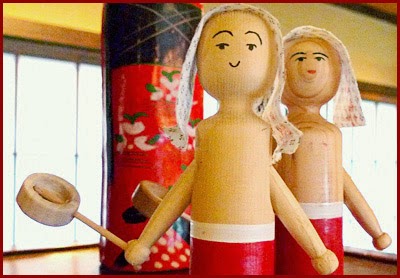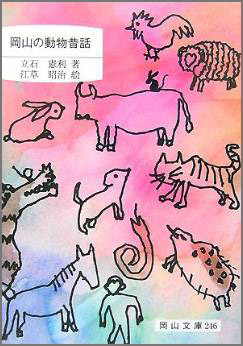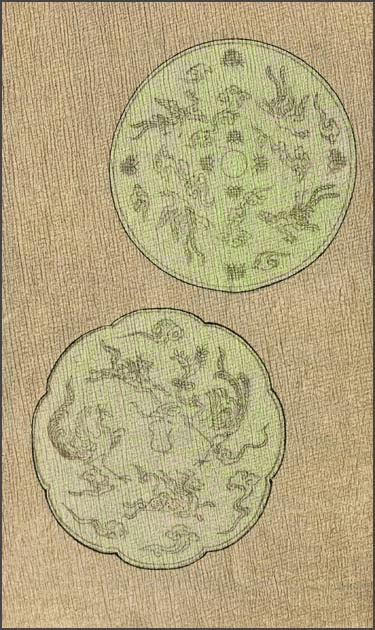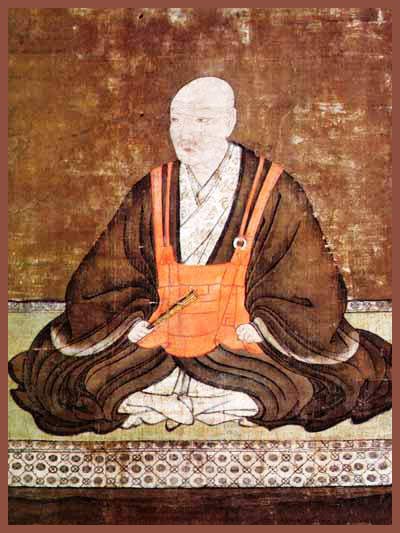[ . BACK to DARUMA MUSEUM TOP . ]
:::::::::::::::::::::::::::::::::::::::::::::::::::::::::::::::::::::::::::::::::::::::::::::::::::::::::::::::::::::::::::::::::::::::::::::::::::::::::::::::::::::::::::
Kites from Kyushu 九州の凧
![]()
西九州伊万里凧あげ大会 - Great Kite Meeting in Imari, Kyushu
. tako 凧 Kites of Japan - Introduction .
:::::::::::::::::::::::::::::::::::::::::::::::::::::::::::::::::::::::::::::::::::::::::::::::::::::::::::::::::::::::::::::::::::::::::::::::::::::::::::::::::::::::::::
- ABC - List of kites from the Prefectures
..............................................................................................................................................
. . . . . . . . . . Fukuoka Folk Art - 福岡県
Kitakyushu, Kita Kyushu 北九州
Kitakyushu is famous for its various types of kites which have to resist the strong winds of the season.
![]()
- source : www.asahi-net.or.jp
- quote -
Kyushu kite makers prepare for year of the dragon
A couple in Kita-Kyushu, Fukuoka Prefecture, plan to make 600 kites decorated with images of dragons ahead of the start of 2012, the year of the dragon in the oriental zodiac.
Yoshihiro and Hideko Takeuchi's Kite House Magoji in Kita-Kyushu's Tobata Ward will supply the kites to folk-craft stores across Japan and tourist attractions around the city.
![]()
Japanese kites decorated with images of dragons at the Kite House Magoji in Kita-Kyushu's Tobata Ward
Yoshihiro, the 68-year-old second-generation owner of the business, makes the frames while his wife Hideko, 63, paints the images. They receive orders from across Japan every year.
- source : Cool Japan Guide
![]()
magojidako, Magoji-dako 孫次凧 Magoji kite
The most common themes are the semi cicada, fugu pufferfish, Kappa water goblin and the uso bullfinch.
They were first made by Magoji san 孫次さん, and the production is now with his grandson, 義博 Magoji Yoshihiro.
孫次凧・製作者:Takeuchi Yoshihiro竹内義博:北九州市戸畑区新地1-6-4
![]()
Kappa Kite かっぱたこ
- source : www.acros.or.jp/r_culture
. usokae 鷽替えexchanging bullfinches .
- KAPPA - 河童 / 合羽 / かっぱ / カッパ - ABC-Index -
.......................................................................
Chikuzen bunbun-dako 筑前ブンブン凧 humming kite from Chikuzen
Made in the town of 直方 Nogata. They are rectangular, with paintings of famous people, like Kabuki actors and show kumadori 隅取り make-up. ブンブン凧 bunbundako
![]()
The first maker, Ishii Nihei石井仁平 , improved the kites from the Suruga province (now Shizuoka prefecture), and the production is now in the hands of the third generation.
When the kite rises in the sky, it makes a humming sound, called "bunbun" in Japanese. The kites are made of fresh green bamboo and Japanese paper and come in many different sizes, from the size of a tobacco box to more than one meter. They can withstand very strong wind, making their special sounds as they dance in the storm. Some are painted with faces of famous Kabuki actors, others with traditional graphic motives.
福岡県直方市頓野2016-2
. Papermachee dolls and toys from Nogata 直方張子 .
Echizen bunbun tako 越前ブンブン凧 from Kita-Kyushu
.......................................................................
Hakata semi dako 博多せみ凧 kite like a cicada from Hakata
and
福岡県北九州市戸畑のセミ凧土鈴
Kita Kyushu Tobata Cicada Kite
![]()
semidako as motive for a clay bell 土鈴
.......................................................................
doojintako 道人凧 kites with Chinese motives
The name is the local dialect for toojin tako唐人凧(とうじんたこ).
They were first made by Magoji 孫次どうじん凧, with the top of dragon 龍道人凧 and the bottom of a tiger.
Now they are also made by Ikuno Yasuyuki 生野保幸 in his free time.
生野保幸:北九州市八幡西区木屋瀬3-6
tatsu doojindako 龍道人凧 kites with dragon motives
red flames are blowing from the mouth of a dragon
- quote -
小倉どうじん凧 Ogura Dojindako
from Ogura ward 北九州市小倉南区城野 in Kitakyushu.
![]()
![]()
![]()
小倉どうじん凧の起源は「小笠原(玲)文書」178「源忠直公年賦二」寛永十五年戌寅、「公43歳(1638年)」島原の乱に出陣する武将に、小倉藩の典医花房道順正信が島原地方で見てきた凧に、龍が波をけって空に昇る姿に雷と太鼓を描き加えて、戦勝祈願として武将に送ったのが始まりと伝えられている。
- source : www.kitakyushu-museum.jp
.......................................................................
Yanagawadako 柳川凧 kites from Yanagawa town
made by Sakata Nobuyoshi 坂田信義, who also runs a restaurant.
He uses pure washi paper and bamboo and has seven different patterns (men).
- from left to right -
![]()
- source : www.asahi-net.or.jp
megaeshi men目返し面 moving eyes
is the most typical one, with large eyes and moving pupils. When the kite swings in the sky, it is easy to follow the pupils, which are fixed in a special manner and can look kind of upside-down.
komori men 子守面 babysitting faces
They are much smaller that the mekaeshi faces and have bamboo stick of abuot 1 meter.
They are also called ororondakoおろろん凧.
ororon is the local dialect to pacify a baby. In former times when mothers carried the babies on their back, they would stick the bamboo with the child so it has something to watch.
karagasa toojin から笠唐人 kite with Chinese motives
This is a very special kite incorporating various motives.
karagasa, karakasa から傘・denden daiko でんでん太鼓・mukai-tai 向い鯛・sensu 扇子・ sakedokkuri, tokkuri 酒徳利.
The umbrella, a twist drum, two auspicious sea breams facing each other, a folding fan and a sake flask.
These are all auspicious motives and this kite is flown on special auspicious days.
One explanation:
These symbols remind of the eight auspicious symbols of Tibetan Buddhism 八吉祥文.
mukadedako むかで凧 kite like a centipede
Up to 20 kites are linked together in a long row (rendako 連凧 "kite train", stringed kites).
His other motives are
「えび尻(角凧にえびの尻尾のような尾がついている)」「奴さん」「とんび」「義経」
八吉祥財神宝幔彩壇 Ashtamangala. "eight Tibetan symbolic attributes"
![]()
source : plaza.rakuten.co.jp/ajiatoan
The eight symbols are
法螺 Conch、法輪 Wheel、宝傘 Parasol、宝蓋 Victory Banner、蓮華 Lotus、宝瓶 Urn、金魚 Fish、吉祥紐 Knot
Ashtamangala - with explanations of these symbols
- source : wikipedia
- - - - - - - - - - - - -
![]()
目返し面
more photos from Yanagawa town 水郷柳川
- source : cooljapanx.web.fc2.com - Hatada
..............................................................................................................................................
. . . . . . . . . . Nagasaki Folk Art 長崎県
Fukue town福江市 - Goto Retto 五島列島 Goto island chain
![]()
baramondako, baramon tako バラモン凧 kite
Gotoo Baramon 五島バラモン凧 Goto Baramon kite
This type of kite has a long history at the Goto islands.
baramon in the local dialect means to be active and lively.
The paintings are of samurai in armour, facing a devil.
The main producer of these kites is 野原権太郎 Nohara Kentaro.
![]()
hinodezuru, hinode tsuru, hinodetsuru 日出鶴 kite in the morning sun with a crane
and
kite with a tsubaki camellia pattern
The crane as a symbol for long life and the sun of Japan - both auspicious symbols for the New Year kite flying.
.......................................................................
Hirado town平戸
![]()
oniyoozu 鬼洋蝶 kite with a demon face
oniyôcho, oniyoochoo
. Oni 鬼 Demon Amulets .
There is even a shochu shnaps with this label.
![]()
. - hyoozu no kami, Hyōzu 兵主神 Hyozu no Kami
- Deity of Wind and Weapons - .
. hyoosube, hyōsube 兵主部 / ひょうすべ Hyosube . from Saga, Kyushu
.......................................................................
Ikinoshima, Iki no Shima 壱岐島 Iki Island
![]()
ondako 鬼凧 "demon kite"
Related to the Demon Legend of Iki Island.
![]()
Iki is full of legends associated with oni devils, from the Devil's Footprint in Makizaki Park and Tatsunoshima Island to the Devil's Tomb Cavern. The traditional craft of ondako makes a kite depicting a particular heroic battle.
The warriorDaijin Yuriwaka beheads an oni, who dies sinking his teeth into Yuriwaka's helmet.
source : ikishi.sakura.ne.jp
Yuriwaka Daijin百合若大臣
![]()
Utagawa Kuniyoshi
Yuriwaka Daijinis a character in kōwakami, a form of musical dance-drama (similar to nō) that was popular in the late sixteenth century. His name may be translated as Young Lord Lily, and lilies decorate the series title border. After fighting in the war against the Mongols in the thirteenth century, Yuriwaka is stranded on an island and is unable to return home for years. When he comes home at last, he has been gone so long, and is so changed by his experiences, that no one recognizes him. His wife believes that he is still alive but is unaware of his return, and she is threatened by the villain Beppu because she has refused to marry him.
In the climactic scene shown here, Yuriwaka demonstrates his identity by stringing and drawing the great bow that only he, a renowned archer, is strong enough to use. He kills Beppu and its happily reunited with his faithful wife.
The inset landscape is framed with bowstrings, another reference to this episode.
As early as 1906, the writer, translator, and critic Tsubouchi Shōyō pointed out that the story of Yuriwaka is strikingly similar to the basic plot of Homer's Odyssey, . . .
Further research by various scholars has shown that the Yuriwaka story is not found in older Japanese sources but appeared suddenly in the late sixteenth century, just when Jesuit missionaries were most active in Japan (prior to the banning of Christianity in the 1630s).
Moreover, the name Yuri (Lily) is very unusual for a man, but it could well be a Japanese abbreviation of Ulysses. All in all, it seems extremely likely that this tale was inspired by one of the greatest classics in Western literature and was probably written by a sixteenth-century Japanese who had heard the story of The Odyssey form a visiting European.
Quoted from:
Utagawa Kuniyoshi: The Sixty-nine Stations of the Kisokaidō
by Sarah E. Thompson, p. 36.
- source : woodblockprints.org
.......................................................................
Nagasaki hata 長崎ハタ Nagasaki Hata kite
![]()
quote
Hata is build at Nagasaki Prefecture, Kyushu.
It does not look like other Japanese traditional kite in shape. It is believed that this kite is imported from far-east Asian counties,such as China,Thailand and Indonesia.
Nagasaki was the only one harbour when Japan closed to foreign countries during Edo period(1603-1867).
It is fairly certain that Nagasaki Hata fighting kite is a derivation of the Indian Fighter. It bears a close resemblance to the classic Indian Fighter, differing only in the absence of the Indian support fin at the tail, and in having its two leading edges supported by guidline of string, while the Indian version has its leading edges unsupported. Nagasaki Hata is traditionally coloured red, white and blue, in the manner of the Dutch ensign.
This is an exceptionally manoeuvable kite capable of flying at amazing speeds with considerable directional control. Equipped with cutting devices such as porcelain glued to the line below the bridle be means of egg white, rice or other natural adhesives, it is a fearsome opponent in competition.
![]()
. byoobu 屏風 Byobu Folding Screens .
..............................................................................................................................................
kara kintoki, kara-kintoki から金時
'Kintoki' is the name of a boy-hero who appears in Japanese old tale.
![]()
源頼光と坂田金時 Yorimitsu and Kintoki
. 金太郎 Kintaro "Golden Boy" .
. . . he became a loyal follower of Minamoto no Yorimitsu under the new name Sakata Kintoki 坂田金時 / 坂田公時.
..............................................................................................................................................
. . . . . . . . . . Oita Folk Art - 大分県
yokanbee よかんべえ Yakko kite
Yakko kites 奴凧 have been a favorite in the Edo period since more than 230 years.
They are also called Edo kites.
Some famous regions of Oita for these kites are Takeda 竹田, Usuki臼杵 and Bungo Takata 豊後高田. yokanbee is the local diaclec for these kites
![]()
source : yonechan kite collection
made by 三郎福助 Saburo Fukusuke
![]()
ura yakko tako 裏奴凧 Yakko from the backside from Usuki臼杵
The Lord Inaba had seen similar kites in Edo and had his retainers make them here in Oita. When the kite begins to fly high, it looks like a manservant, slowly vanishing in the clouds. This kite was especially flown at the O-Bon お盆 rituals for the ancestors.
. Yakko Daruma 奴だるま .
yakko 奴
was the name of the lowest social position in the Edo society, the simple workers of a daimyo household.
:::::::::::::::::::::::::::::::::::::::::::::::::::::::::::::::::::::::::::::::::::::::::::::::::::::::::::::::::::::::::::::::::::::::::::::::::::::::::::::::::::::::::::
. tako 凧 Kites of Japan - Introduction .
- - - #kyushukites #kitesfromkyushu - - - - -
:::::::::::::::::::::::::::::::::::::::::::::::::::::::::::::::::::::::::::::::::::::::::::::::::::::::::::::::::::::::::::::::::::::::::::::::::::::::::::::::::::::::::::
![]()
. Join the MINGEI group on facebook ! .
. Regional Folk Toys from Japan .
. Tohoku after the BIG earthquake March 11, 2011
[ . BACK to WORLDKIGO . TOP . ]
[ . BACK to DARUMA MUSEUM TOP . ]
:::::::::::::::::::::::::::::::::::::::::::::::::::::::::::::::::::::::::::::::::::::::::::::::::::::::::::::::::::::::::::::::::::::::::::::::::::::::::::::::::::::::::::
:::::::::::::::::::::::::::::::::::::::::::::::::::::::::::::::::::::::::::::::::::::::::::::::::::::::::::::::::::::::::::::::::::::::::::::::::::::::::::::::::::::::::::
Kites from Kyushu 九州の凧
西九州伊万里凧あげ大会 - Great Kite Meeting in Imari, Kyushu
. tako 凧 Kites of Japan - Introduction .
:::::::::::::::::::::::::::::::::::::::::::::::::::::::::::::::::::::::::::::::::::::::::::::::::::::::::::::::::::::::::::::::::::::::::::::::::::::::::::::::::::::::::::
- ABC - List of kites from the Prefectures
..............................................................................................................................................
. . . . . . . . . . Fukuoka Folk Art - 福岡県
Kitakyushu, Kita Kyushu 北九州
Kitakyushu is famous for its various types of kites which have to resist the strong winds of the season.

- source : www.asahi-net.or.jp
- quote -
Kyushu kite makers prepare for year of the dragon
A couple in Kita-Kyushu, Fukuoka Prefecture, plan to make 600 kites decorated with images of dragons ahead of the start of 2012, the year of the dragon in the oriental zodiac.
Yoshihiro and Hideko Takeuchi's Kite House Magoji in Kita-Kyushu's Tobata Ward will supply the kites to folk-craft stores across Japan and tourist attractions around the city.

Japanese kites decorated with images of dragons at the Kite House Magoji in Kita-Kyushu's Tobata Ward
Yoshihiro, the 68-year-old second-generation owner of the business, makes the frames while his wife Hideko, 63, paints the images. They receive orders from across Japan every year.
- source : Cool Japan Guide

magojidako, Magoji-dako 孫次凧 Magoji kite
The most common themes are the semi cicada, fugu pufferfish, Kappa water goblin and the uso bullfinch.
They were first made by Magoji san 孫次さん, and the production is now with his grandson, 義博 Magoji Yoshihiro.
孫次凧・製作者:Takeuchi Yoshihiro竹内義博:北九州市戸畑区新地1-6-4

Kappa Kite かっぱたこ
- source : www.acros.or.jp/r_culture
. usokae 鷽替えexchanging bullfinches .
- KAPPA - 河童 / 合羽 / かっぱ / カッパ - ABC-Index -
.......................................................................
Chikuzen bunbun-dako 筑前ブンブン凧 humming kite from Chikuzen
Made in the town of 直方 Nogata. They are rectangular, with paintings of famous people, like Kabuki actors and show kumadori 隅取り make-up. ブンブン凧 bunbundako

The first maker, Ishii Nihei石井仁平 , improved the kites from the Suruga province (now Shizuoka prefecture), and the production is now in the hands of the third generation.
When the kite rises in the sky, it makes a humming sound, called "bunbun" in Japanese. The kites are made of fresh green bamboo and Japanese paper and come in many different sizes, from the size of a tobacco box to more than one meter. They can withstand very strong wind, making their special sounds as they dance in the storm. Some are painted with faces of famous Kabuki actors, others with traditional graphic motives.
福岡県直方市頓野2016-2
. Papermachee dolls and toys from Nogata 直方張子 .
Echizen bunbun tako 越前ブンブン凧 from Kita-Kyushu
.......................................................................
Hakata semi dako 博多せみ凧 kite like a cicada from Hakata
and
福岡県北九州市戸畑のセミ凧土鈴
Kita Kyushu Tobata Cicada Kite

semidako as motive for a clay bell 土鈴
.......................................................................
doojintako 道人凧 kites with Chinese motives
The name is the local dialect for toojin tako唐人凧(とうじんたこ).
They were first made by Magoji 孫次どうじん凧, with the top of dragon 龍道人凧 and the bottom of a tiger.
Now they are also made by Ikuno Yasuyuki 生野保幸 in his free time.
生野保幸:北九州市八幡西区木屋瀬3-6
tatsu doojindako 龍道人凧 kites with dragon motives
red flames are blowing from the mouth of a dragon
- quote -
小倉どうじん凧 Ogura Dojindako
from Ogura ward 北九州市小倉南区城野 in Kitakyushu.
小倉どうじん凧の起源は「小笠原(玲)文書」178「源忠直公年賦二」寛永十五年戌寅、「公43歳(1638年)」島原の乱に出陣する武将に、小倉藩の典医花房道順正信が島原地方で見てきた凧に、龍が波をけって空に昇る姿に雷と太鼓を描き加えて、戦勝祈願として武将に送ったのが始まりと伝えられている。
- source : www.kitakyushu-museum.jp
.......................................................................
Yanagawadako 柳川凧 kites from Yanagawa town
made by Sakata Nobuyoshi 坂田信義, who also runs a restaurant.
He uses pure washi paper and bamboo and has seven different patterns (men).
- from left to right -

- source : www.asahi-net.or.jp
megaeshi men目返し面 moving eyes
is the most typical one, with large eyes and moving pupils. When the kite swings in the sky, it is easy to follow the pupils, which are fixed in a special manner and can look kind of upside-down.
komori men 子守面 babysitting faces
They are much smaller that the mekaeshi faces and have bamboo stick of abuot 1 meter.
They are also called ororondakoおろろん凧.
ororon is the local dialect to pacify a baby. In former times when mothers carried the babies on their back, they would stick the bamboo with the child so it has something to watch.
karagasa toojin から笠唐人 kite with Chinese motives
This is a very special kite incorporating various motives.
karagasa, karakasa から傘・denden daiko でんでん太鼓・mukai-tai 向い鯛・sensu 扇子・ sakedokkuri, tokkuri 酒徳利.
The umbrella, a twist drum, two auspicious sea breams facing each other, a folding fan and a sake flask.
These are all auspicious motives and this kite is flown on special auspicious days.
One explanation:
These symbols remind of the eight auspicious symbols of Tibetan Buddhism 八吉祥文.
mukadedako むかで凧 kite like a centipede
Up to 20 kites are linked together in a long row (rendako 連凧 "kite train", stringed kites).
His other motives are
「えび尻(角凧にえびの尻尾のような尾がついている)」「奴さん」「とんび」「義経」
八吉祥財神宝幔彩壇 Ashtamangala. "eight Tibetan symbolic attributes"

source : plaza.rakuten.co.jp/ajiatoan
The eight symbols are
法螺 Conch、法輪 Wheel、宝傘 Parasol、宝蓋 Victory Banner、蓮華 Lotus、宝瓶 Urn、金魚 Fish、吉祥紐 Knot
Ashtamangala - with explanations of these symbols
- source : wikipedia
- - - - - - - - - - - - -

目返し面
more photos from Yanagawa town 水郷柳川
- source : cooljapanx.web.fc2.com - Hatada
..............................................................................................................................................
. . . . . . . . . . Nagasaki Folk Art 長崎県
Fukue town福江市 - Goto Retto 五島列島 Goto island chain

baramondako, baramon tako バラモン凧 kite
Gotoo Baramon 五島バラモン凧 Goto Baramon kite
This type of kite has a long history at the Goto islands.
baramon in the local dialect means to be active and lively.
The paintings are of samurai in armour, facing a devil.
The main producer of these kites is 野原権太郎 Nohara Kentaro.

hinodezuru, hinode tsuru, hinodetsuru 日出鶴 kite in the morning sun with a crane
and
kite with a tsubaki camellia pattern
The crane as a symbol for long life and the sun of Japan - both auspicious symbols for the New Year kite flying.
.......................................................................
Hirado town平戸
oniyoozu 鬼洋蝶 kite with a demon face
oniyôcho, oniyoochoo
. Oni 鬼 Demon Amulets .
There is even a shochu shnaps with this label.

. - hyoozu no kami, Hyōzu 兵主神 Hyozu no Kami
- Deity of Wind and Weapons - .
. hyoosube, hyōsube 兵主部 / ひょうすべ Hyosube . from Saga, Kyushu
.......................................................................
Ikinoshima, Iki no Shima 壱岐島 Iki Island

ondako 鬼凧 "demon kite"
Related to the Demon Legend of Iki Island.

Iki is full of legends associated with oni devils, from the Devil's Footprint in Makizaki Park and Tatsunoshima Island to the Devil's Tomb Cavern. The traditional craft of ondako makes a kite depicting a particular heroic battle.
The warriorDaijin Yuriwaka beheads an oni, who dies sinking his teeth into Yuriwaka's helmet.
source : ikishi.sakura.ne.jp
Yuriwaka Daijin百合若大臣

Utagawa Kuniyoshi
Yuriwaka Daijinis a character in kōwakami, a form of musical dance-drama (similar to nō) that was popular in the late sixteenth century. His name may be translated as Young Lord Lily, and lilies decorate the series title border. After fighting in the war against the Mongols in the thirteenth century, Yuriwaka is stranded on an island and is unable to return home for years. When he comes home at last, he has been gone so long, and is so changed by his experiences, that no one recognizes him. His wife believes that he is still alive but is unaware of his return, and she is threatened by the villain Beppu because she has refused to marry him.
In the climactic scene shown here, Yuriwaka demonstrates his identity by stringing and drawing the great bow that only he, a renowned archer, is strong enough to use. He kills Beppu and its happily reunited with his faithful wife.
The inset landscape is framed with bowstrings, another reference to this episode.
As early as 1906, the writer, translator, and critic Tsubouchi Shōyō pointed out that the story of Yuriwaka is strikingly similar to the basic plot of Homer's Odyssey, . . .
Further research by various scholars has shown that the Yuriwaka story is not found in older Japanese sources but appeared suddenly in the late sixteenth century, just when Jesuit missionaries were most active in Japan (prior to the banning of Christianity in the 1630s).
Moreover, the name Yuri (Lily) is very unusual for a man, but it could well be a Japanese abbreviation of Ulysses. All in all, it seems extremely likely that this tale was inspired by one of the greatest classics in Western literature and was probably written by a sixteenth-century Japanese who had heard the story of The Odyssey form a visiting European.
Quoted from:
Utagawa Kuniyoshi: The Sixty-nine Stations of the Kisokaidō
by Sarah E. Thompson, p. 36.
- source : woodblockprints.org
.......................................................................
Nagasaki hata 長崎ハタ Nagasaki Hata kite
quote
Hata is build at Nagasaki Prefecture, Kyushu.
It does not look like other Japanese traditional kite in shape. It is believed that this kite is imported from far-east Asian counties,such as China,Thailand and Indonesia.
Nagasaki was the only one harbour when Japan closed to foreign countries during Edo period(1603-1867).
It is fairly certain that Nagasaki Hata fighting kite is a derivation of the Indian Fighter. It bears a close resemblance to the classic Indian Fighter, differing only in the absence of the Indian support fin at the tail, and in having its two leading edges supported by guidline of string, while the Indian version has its leading edges unsupported. Nagasaki Hata is traditionally coloured red, white and blue, in the manner of the Dutch ensign.
This is an exceptionally manoeuvable kite capable of flying at amazing speeds with considerable directional control. Equipped with cutting devices such as porcelain glued to the line below the bridle be means of egg white, rice or other natural adhesives, it is a fearsome opponent in competition.

. byoobu 屏風 Byobu Folding Screens .
..............................................................................................................................................
kara kintoki, kara-kintoki から金時
'Kintoki' is the name of a boy-hero who appears in Japanese old tale.

源頼光と坂田金時 Yorimitsu and Kintoki
. 金太郎 Kintaro "Golden Boy" .
. . . he became a loyal follower of Minamoto no Yorimitsu under the new name Sakata Kintoki 坂田金時 / 坂田公時.
..............................................................................................................................................
. . . . . . . . . . Oita Folk Art - 大分県
yokanbee よかんべえ Yakko kite
Yakko kites 奴凧 have been a favorite in the Edo period since more than 230 years.
They are also called Edo kites.
Some famous regions of Oita for these kites are Takeda 竹田, Usuki臼杵 and Bungo Takata 豊後高田. yokanbee is the local diaclec for these kites

source : yonechan kite collection
made by 三郎福助 Saburo Fukusuke

ura yakko tako 裏奴凧 Yakko from the backside from Usuki臼杵
The Lord Inaba had seen similar kites in Edo and had his retainers make them here in Oita. When the kite begins to fly high, it looks like a manservant, slowly vanishing in the clouds. This kite was especially flown at the O-Bon お盆 rituals for the ancestors.
. Yakko Daruma 奴だるま .
yakko 奴
was the name of the lowest social position in the Edo society, the simple workers of a daimyo household.
:::::::::::::::::::::::::::::::::::::::::::::::::::::::::::::::::::::::::::::::::::::::::::::::::::::::::::::::::::::::::::::::::::::::::::::::::::::::::::::::::::::::::::
. tako 凧 Kites of Japan - Introduction .
- - - #kyushukites #kitesfromkyushu - - - - -
:::::::::::::::::::::::::::::::::::::::::::::::::::::::::::::::::::::::::::::::::::::::::::::::::::::::::::::::::::::::::::::::::::::::::::::::::::::::::::::::::::::::::::
. Join the MINGEI group on facebook ! .
. Regional Folk Toys from Japan .
. Tohoku after the BIG earthquake March 11, 2011
[ . BACK to WORLDKIGO . TOP . ]
[ . BACK to DARUMA MUSEUM TOP . ]
:::::::::::::::::::::::::::::::::::::::::::::::::::::::::::::::::::::::::::::::::::::::::::::::::::::::::::::::::::::::::::::::::::::::::::::::::::::::::::::::::::::::::::

































































































































